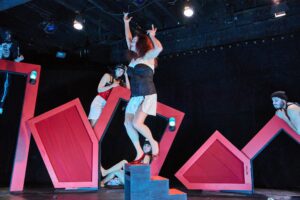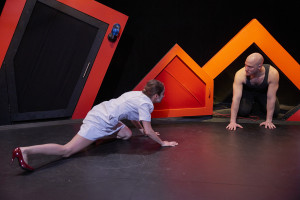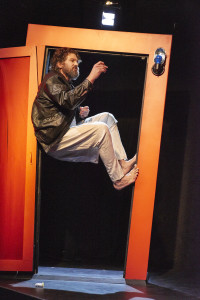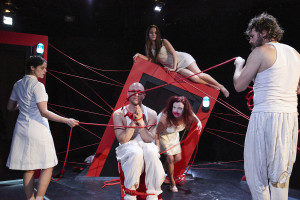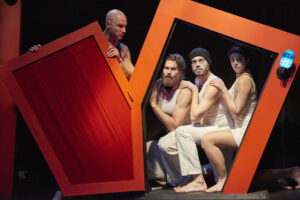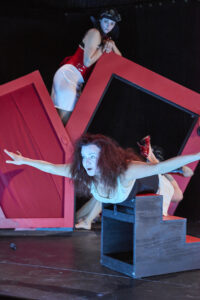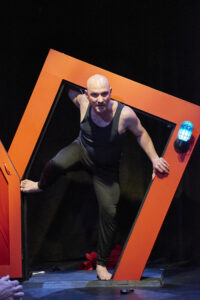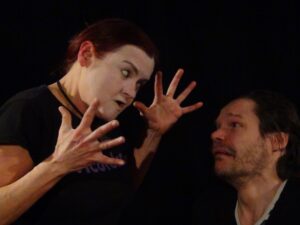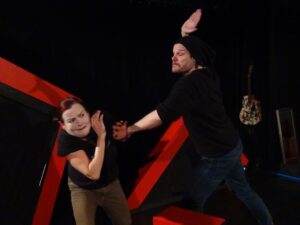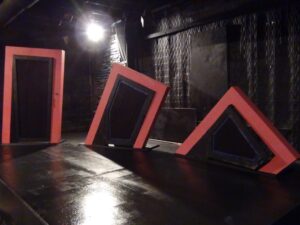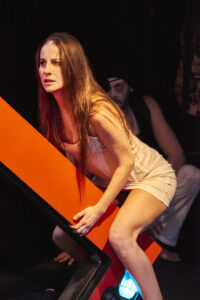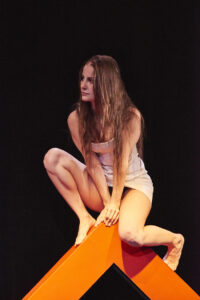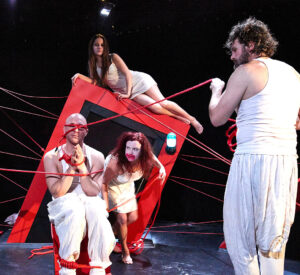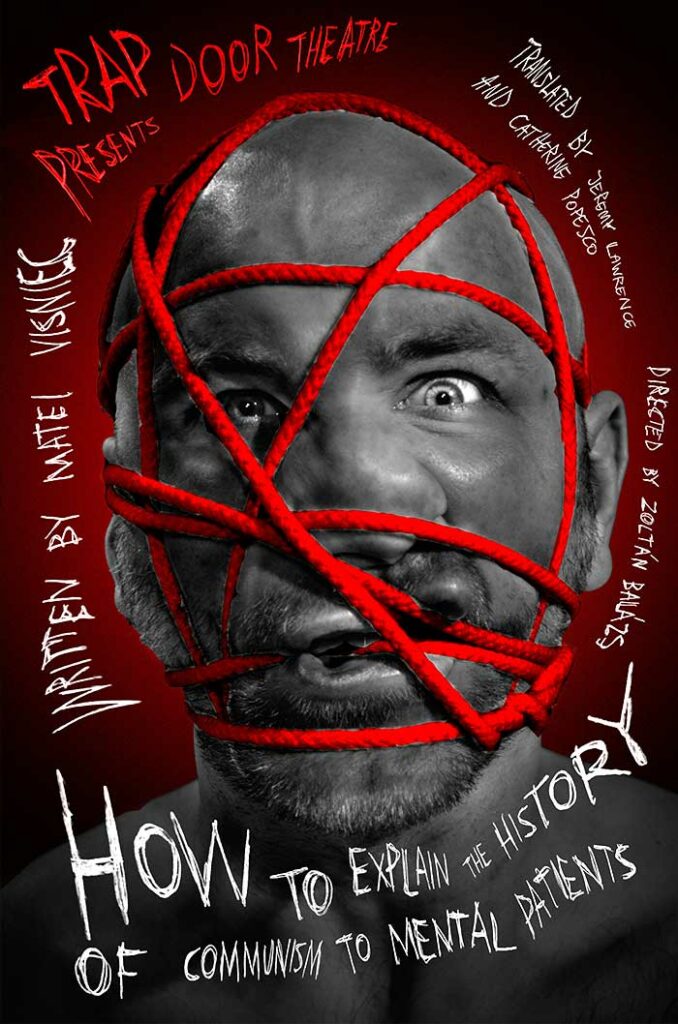
Cast: Simina Contras, Michael Garvey, Beata Pilch, Benjamin Ponce, Pavi Proczko, and Ann Sonneville.
Playwright
Matei Vişniec (playwright, poet and journalist) was born in Romania, and now lives in Paris. He began writing for the theatre in 1977. Early in his career Vişniec’s plays were banned by the Romanian censors. In 1987 he was invited to France by a literary foundation. While there, he asked for and received political asylum. After the fall of communism in Romania, in 1989, Vişniec became one of the most performed playwrights in the country. Vişniec gained international attention in 1992, with productions of Horses at the Window in France, and Old Clown Wanted at the “Bonner Biennale”. Since then, Matei Vişniec’s work has been produced in France, Germany, United States, Denmark, Austria, Poland, Finland, Italy, Turkey, Brazil, Romania, and Moldavia. Most recently, by a decree signed by French President Emmanuel Macron, Matei Vişniec became a Knight of the National Order of Merit.
Set Designer: Aaron O’Neill / Lighting Design: Richard Norwood / Costume Design: Rachel Sypniewski / Music Composition: Danny Rockett / Stage Managers: Emily Lotspeich and Gary Damico / Makeup Design: Zsofia Otvos / Graphic Design: Michal Janicki / Dramaturg: Milan Pribisic
How to Explain the History of Communism to Mental Patients
Written by Matei Vişniec
Translated by Jeremy Lawrence and Catherine Popesco
Directed by Zoltán Balázs (Guest Director from Budapest, Hungary)
March 30, 2016 – April 23, 2016
Presented with support from the Trust of Mutual Understanding

Joseph Jefferson Citation for “Original Music in a Play” – Danny Rocket
An existentialist drama questioning the relation between personal and political, truth and deceit, real and delusional.
Gallery
The performers here deliver. Every movement is powerful and attentive.
Jay Van Ort, New City
Balázs has developed a physical acting method that can build and communicate a story without words. It is a beautiful thing to watch
Christopher Kidder-Mostrom, Theatre by Numbers
Director Zoltán Balázs’s angular, stylized staging is hilarious, perplexing, and harrowing – often all at the same time.
Justin Hayford, The Chicago Reader
Director Zoltán Balázs creates extremely spellbinding vignettes in what amounts to a sort of slow-motion work of contemporary movement art.
Clint May,Chicago Theatre Beat
Director
Zoltán Balázs graduated as an actor and director from the University of Theatre and Film Arts in Budapest. He participated in several foreign workshops such as in Anatoly Vasiliev’s and Josef Nadj’s workshop in Avignon. He studied from Robert Wilson in Paris and he also graduated from the European Theatre Union’s directorial course in Stuttgart. In 2001 he founded one of the most important independent theatre, Maladype Theatre, and since he has been the artistic director in Budapest, Hungary. Through his performances he aims to give the audience a theatrical experience which is complex, appeals to emotions and senses and raises the scenery, motion and music to the same level as the lyrics. His main works: School for Buffons by Michel de Ghelderode; The Blacks by Jean Genet; Empedocles by Friedrich Hölderlin; Pelléas and Mélisande by Maurice Maeterlinck; Leonce and Lena by Georg Büchner; The Vampire by Heinrich Marschner; Faust I-II. by J. W. Goethe; King Ubu by Alfred Jarry; Platonov by A.P. Chekov; The Kitchen by Arnold Wesker; Inferno by Dante; Swan Lake by P. I. Tchaikovsky; Don Carlos by F.Schiller; Master and Margarita by M. A. Bulgakov and Macbeth by W. Shakespeare. The aim of Zoltán Balázs’s method – uniquely developed for training actors – is to develop the techniques for moving, dialogue and enhance the sense of body through self-examination. He focuses on the actors’ intensive common work and continuous communication with the audience. Therefore the importance to improve the actors’ analytical and synthesizing skills; the everyday tone of their speech; and the constant condition of the improvisation-based play that gives immediate and spirited reaction to the audience is inevitable.
